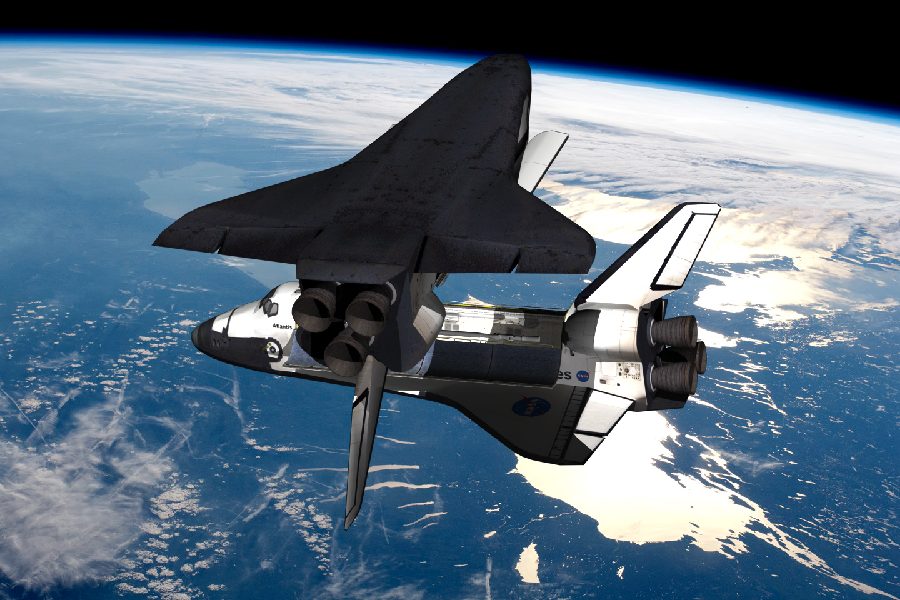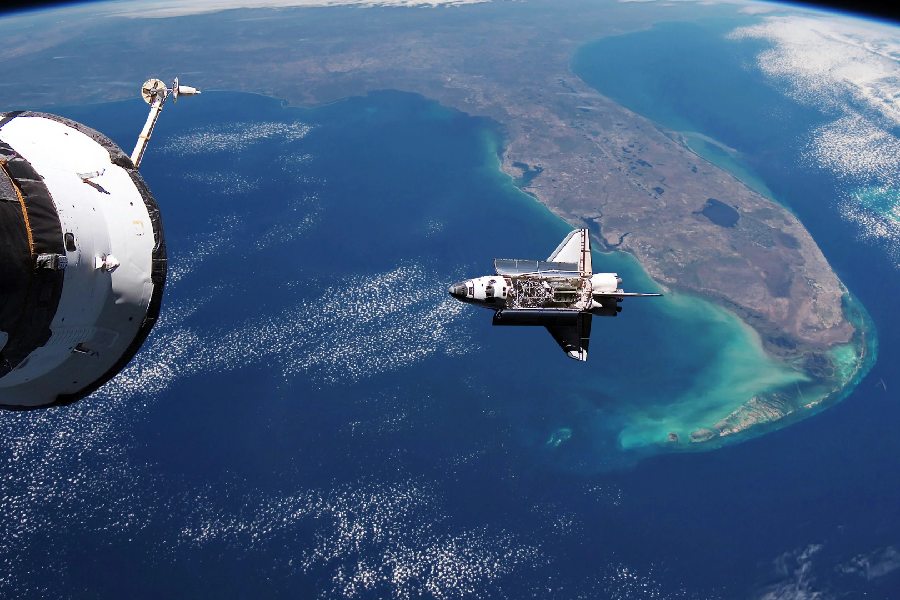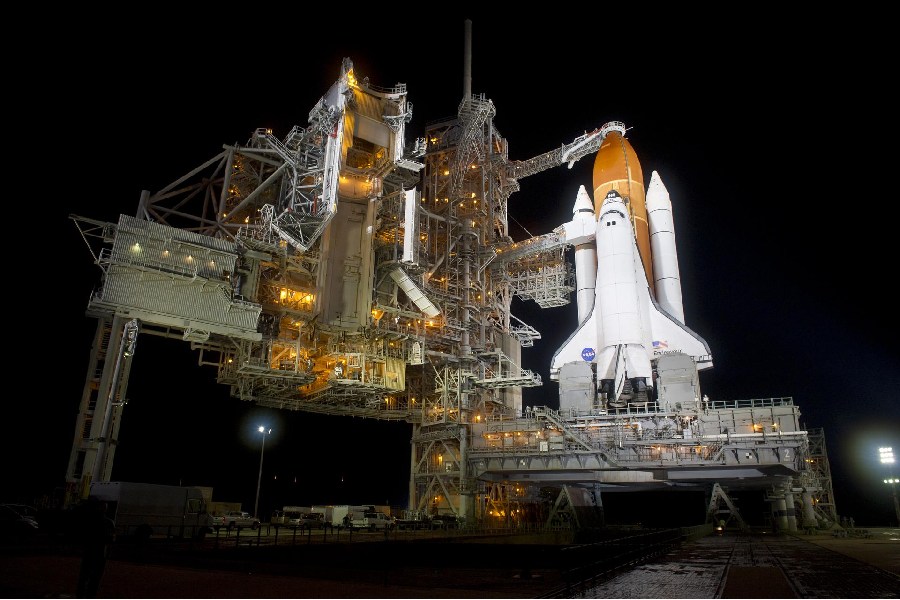Space shuttles blaze across space at phenomenal velocities during their missions. They reach speeds faster than any aircraft on Earth. But how fast does a space shuttle go?
In this article, we’ll explore the thrilling flight speeds space shuttles can attain. We’ll look at the advanced engines and aerodynamic designs. These designs grant them a record-setting pace. Learn how their maximum velocities compare to jets, rockets, and meteors flashing through the cosmos.

How Fast Does a Space Shuttle Go?
Space shuttles can reach extremely high speeds. They can go over 17,500 miles per hour. This is partly due to their powerful rocket engines.
It is also due to their sleek, aerodynamic design. So, how fast is a space shuttle? Shuttles accelerate rapidly after launch and achieve over 17,000 mph to stay in low Earth orbit.
In missions further from Earth, shuttles fired boosters. These boosters enabled speeds higher than orbital velocity. The record was set on STS-33. STS-33 saw Discovery orbit Earth over 200 times. It orbited at 17,500 mph, which is around 5 miles per second.
While Space Shuttle program operations ended in 2011, these feats of speed demonstrate something. They show the remarkable engineering behind the iconic winged orbiters in spaceflight for over three decades. Even today, few human-made crafts in history have rivaled shuttles’ swiftness.
Vehicle Acceleration
Acceleration is a crucial metric that quantifies velocity gains as a function of time. Essentially, the speed at which an object’s velocity increases defines the overall pace of its acceleration. A faster acceleration signifies powerful thrust and a lower mass, which contribute to higher peak speeds.
This heightened acceleration is pivotal in space exploration, particularly for space shuttles. By increasing the rate at which speed is gained, mission capabilities are significantly broadened. This is achieved by expanding the distances reachable during spaceflights.
The correlation between high acceleration and extended mission capabilities means that more targets come within reach at elevated speeds. This has proven instrumental in enhancing the efficiency and effectiveness of space exploration endeavors.
Significance of vehicle acceleration in space missions
Enhanced shuttle acceleration has broadened the spectrum of potential mission destinations, allowing access to a wider range of orbital paths and objectives within a single flight. This focus on accelerating the shuttle has driven key aspects of its construction and design, prioritizing better acceleration for improved performance.
Moreover, this emphasis on acceleration has facilitated swift journeys to space stations and satellites, ensuring timely delivery of payloads or crews when required. The increased pace of acceleration has led to more agile and efficient space operations overall.
Propulsion Systems and Acceleration Control
Overview of propulsion systems
Shuttles utilized a combination of rocket propulsion systems, with three main engines delivering the bulk of the thrust. Additionally, two solid rocket boosters provided significant additional force immediately after launch.
The engines had the capability to throttle thrust during flight for acceleration control. Onboard computers could automatically adjust acceleration rates at various mission stages.
Propulsion systems and their influence on acceleration
The RS-25 reusable main engines supplied 500,000 lbs of thrust each at liftoff. Complementing this power, twin solid rockets contributed an additional six million pounds of thrust during their two-minute burn.
The main engines showcased exceptional efficiency with a specific impulse that facilitated a very high exhaust velocity. This efficiency translated into more acceleration per unit of fuel consumed by the engines, making them highly effective in propelling the spacecraft.
Importance of starting velocity
The importance of speed during launch cannot be overstated, as it significantly influences the entire flight trajectory and the mission’s capabilities. The initial velocity is crucial in reaching key milestones such as achieving orbit or attaining escape velocity.
Commencing with a higher speed offers various advantages in the later stages of the flight plan, enabling the exploration of more elevated and faster orbits over time. This expands trajectory options and yields significant savings in fuel costs throughout an extensive, multi-burn space mission.
By establishing a brisk early velocity, a mission unlocks many trajectory possibilities, reduces fuel requirements, and establishes a foundation for optimal performance across essential spaceflight metrics. This strategic approach maximizes the potential scope and success of the mission.
Impact of initial speed on trajectory
Starting with more speed means there’s more kinetic energy available for the craft during flight. This surplus of energy can be used to reach higher altitudes or to accelerate the craft further when necessary.
It opens up new trajectory options and expands the limits of the mission profile. Additionally, it helps the craft overcome the effects of gravity more quickly after launch. By following a fast-start trajectory, the craft can reach higher speeds and altitudes soon after leaving the launch pad.
This, in turn, allows for the achievement of stable orbits at an earlier stage, enhancing the overall capabilities of the craft. Essentially, the path and speed at which the craft leaves the pad shape its entire flight, providing kinetic advantages that extend its reach and capabilities.

Influences on spacecraft’s journey
A higher starting velocity provides a spacecraft with increased directional momentum, making it more challenging for Earth’s gravity to impede its initial progress. This liftoff speed influences the spacecraft’s immediate trajectory and is crucial in shaping the options for future orbital destinations and mission plans.
The elevated liftoff speed extends the range of accessible orbital destinations and expands the possibilities for mission objectives. It brings targets and trajectories within reach that would be unattainable with a slower initial pace. This enhanced speed transforms once infeasible dreams into plausible and ambitious missions.
Fast ascending spacecraft, propelled by their initial velocity, gain remarkable flexibility in their flight plans. This increased flexibility allows a broader reach to various space destinations, from stations to asteroids.
Engine Cutoff
Definition and role in speed control
Halting engine thrust mid-flight, known as engine cutoff, is crucial for maintaining precision in mission control. This precise timing ensures that the intended velocity is reached, a key factor in achieving successful shuttle flight operations. It’s not just about reaching the desired velocity; it’s about doing so at the right moment to enable productive orbits and subsequent space activities post-launch.
The accuracy of shutdown calls is paramount. Flawless velocity tracking and instant shutdown at predetermined milestones are essential for shaping trajectories and ensuring accuracy across all mission phases.
Engine cutoff’s impact on trajectory adjustments
Once the desired speed is achieved, cutting thrust allows for precise trajectory adjustments. These small tweaks steer the spacecraft along the required orbital path, facilitating rendezvous with space stations or flyby targets. Additionally, it marks the beginning of the transition to non-propelled coasting.
Gravity and momentum play at this stage, guiding the spacecraft along planned arcing trajectories. Mastery over shutdown procedures provides:
- The ability to leverage kinetics.
- Ensuring the most efficient route to stations.
- Utilizing planetary assists.
- Even embarking on interstellar journeys facilitated by precise propulsion controls.
Solid Rocket Boosters
The solid boosters gave the shuttles a powerful initial thrust, propelling them off the launch pad with rapid acceleration in the first minutes after liftoff. These boosters were responsible for most of the ascent power until they were detached.
Specifically, the twin boosters delivered the highest thrust during the initial ascent phase, quickly boosting acceleration after clearing the launch tower. These boosters used solid fuel to generate high levels of force for short durations.
Their role was crucial in complementing the main engines during a critical double-power phase, accelerating the shuttles rapidly up to key speed thresholds. Their solid fuel mixtures were designed to maximize energy output during the intense but brief burns required for launching.
Speed of Travel in Space
Various metrics measure spacecraft’s speed as they traverse through space. Regarding horizontal movement, speed is typically expressed in miles or kilometers per hour. However, vertical ascent focuses more on the rate at which feet or meters are gained over time.
Precise energy figures per unit mass are essential to accurately track orbit or escape velocities. Speed measurements are tailored to meet different space missions’ specific needs and contexts. The objectives and nature of each mission determine which velocities are prioritized for tracking throughout its trajectory.
Circular Orbit vs. Lunar Orbit
Circular orbits around Earth persist indefinitely without requiring additional propulsion. Spacecraft maintain their path by orbiting at fixed altitudes and velocities, sustained by the stability of their trajectory. These self-perpetuating orbits utilize a consistent tangential velocity, allowing spacecraft to freefall around planetary bodies continuously.
In contrast, lunar orbits involve slower speeds during ascent arcs and follow elliptical paths heavily influenced by the Moon’s gravity. Navigating lunar trajectories is more complex, requiring intricate flight plans.
The Moon’s gravitational pull causes spacecraft to move slower. They follow sweeping trajectories instead of stable circular orbits around Earth.

Conclusion
How fast does a space shuttle go? The extraordinary ability to reach speeds of 17,500 mph empowered ambitious missions, allowing for circumnavigation of Earth and journeys beyond.
We highlighted cutting-edge designs, emphasizing propulsion power and aerodynamic configurations that endow shuttles with incredible speed. This technology remains unrivaled today regarding the remarkable velocities achievable by space shuttles.
